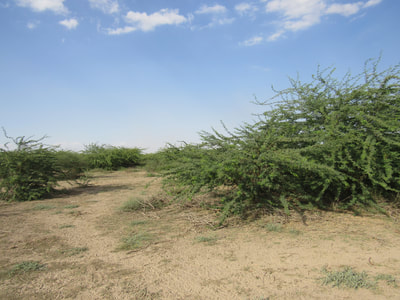Research
How will increasing urbanization affect the movement and crop-foraging behaviour of Asian elephants?

Peri-urban areas around Bengaluru, India, are witnessing dramatic changes leading to increased agriculture, the fragmentation of forests and the expansion of linear infrastructure. As part of a project with the Frontier Elephant Programme, I modeled elephant decision-making to understand and predict how present and future land-use change might affect elephant movement and conflict patterns.
Evaluating landscape permeability to large mammal movement in two conservation priority landscapes in India


Landscape permeability for large mammals in the Western Ghats (left) and Central India (right)
[Read the paper here; access the model here]
As part of a Science for Nature and People Partnership project, I evaluated landscape permeability to movement for the elephant, gaur, leopard, sambar and sloth bear in the Western Ghats and (with the exception of the elephant) Central India. These two conservation priority landscapes are threatened by habitat fragmentation due to land-use change and linear infrastructure. We found a reduction of overall movement in both landscapes, suggesting low permeability to movement. Our spatially-explicit results identify where animal movement is unrestricted, increased or impeded due to underlying landscape features. These maps can aid land-use planning and conservation prioritization, with the goal of reconciling infrastructure development with conservation.
I also led the development of a science-based data portal, India Under Construction, along with Srinivas Vaidyanathan. The portal provides data on linear infrastructure and protected areas in India, and aims to allow a wide range of users, from scientists to activists, to understand and take informed action on habitat fragmentation and infrastructure development in India.
How does increased woody cover influence the behaviour and community of nocturnal rodents in a semi-arid grassland in India?


[Read the paper here]
Bush encroachment, which is the natural or artificial increase in woody vegetation, is a major threat to savannas globally. In the Banni grasslands of India— one of India’s largest grasslands— bush encroachment due to the invasive Prosopis juliflora has resulted in the conversion of ~45% of the grassland into woodlands. I investigated how bush encroachment in the Banni grasslands influenced the behaviour of nocturnal rodents which are a keystone species in grasslands.
This research was for my dissertation, as part of the Master’s program in Wildlife Biology and Conservation at the National Centre for Biological Sciences. My advisors were Dr. Shomen Mukherjee and Dr. Abi Tamim Vanak.
Understanding species richness patterns in the Western Ghats of India
For many taxa like trees and frogs, there is a monotonic increase in species richness from the north to south of the Western Ghats biodiversity hotspot. Why is this? Along with Dr. Kartik Shanker from the Indian Institute of Science, I simulated how species ranges interact with temperature and boundaries (such as the coast line or the edge of a habitat) to influence species richness patterns in the Western Ghats.